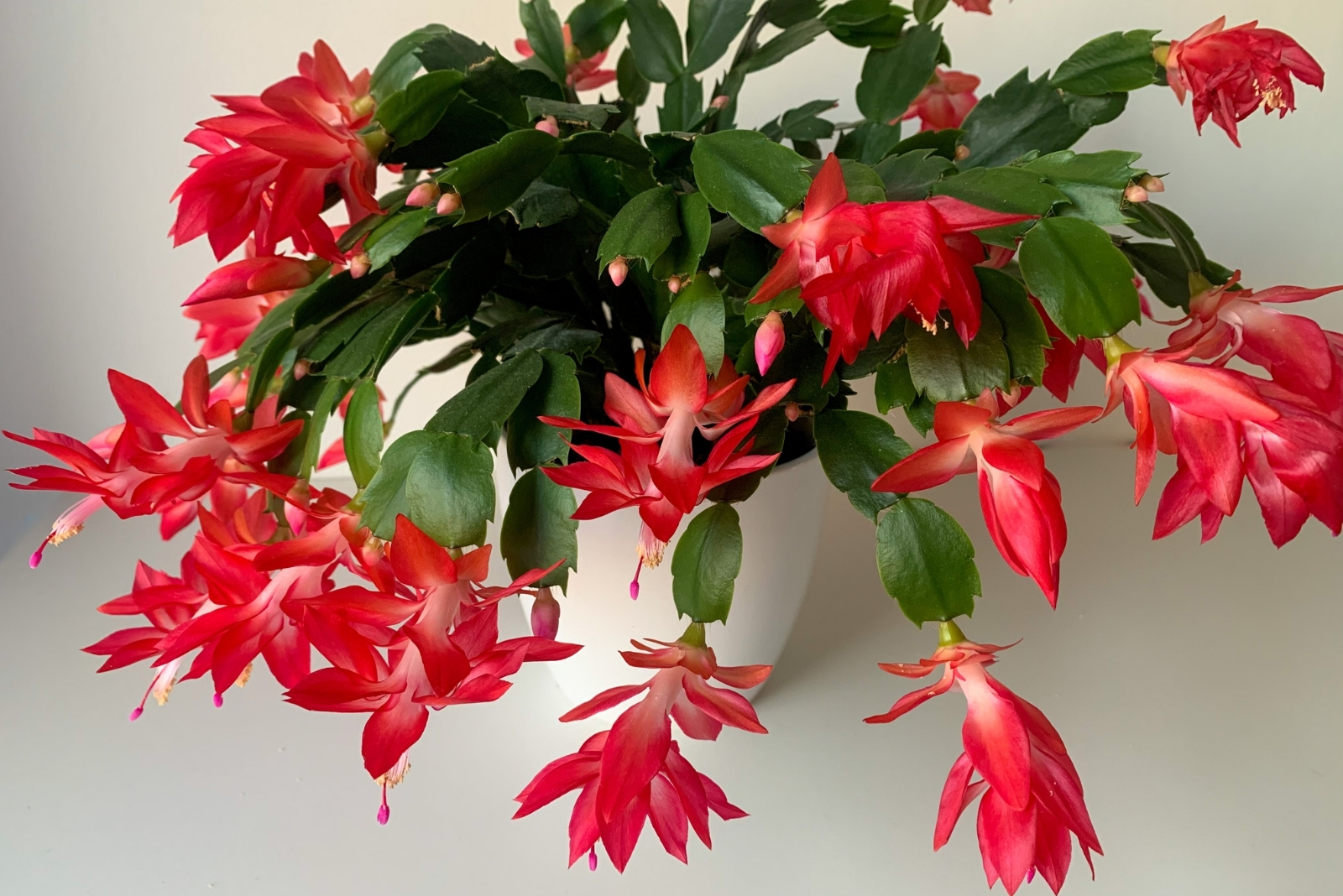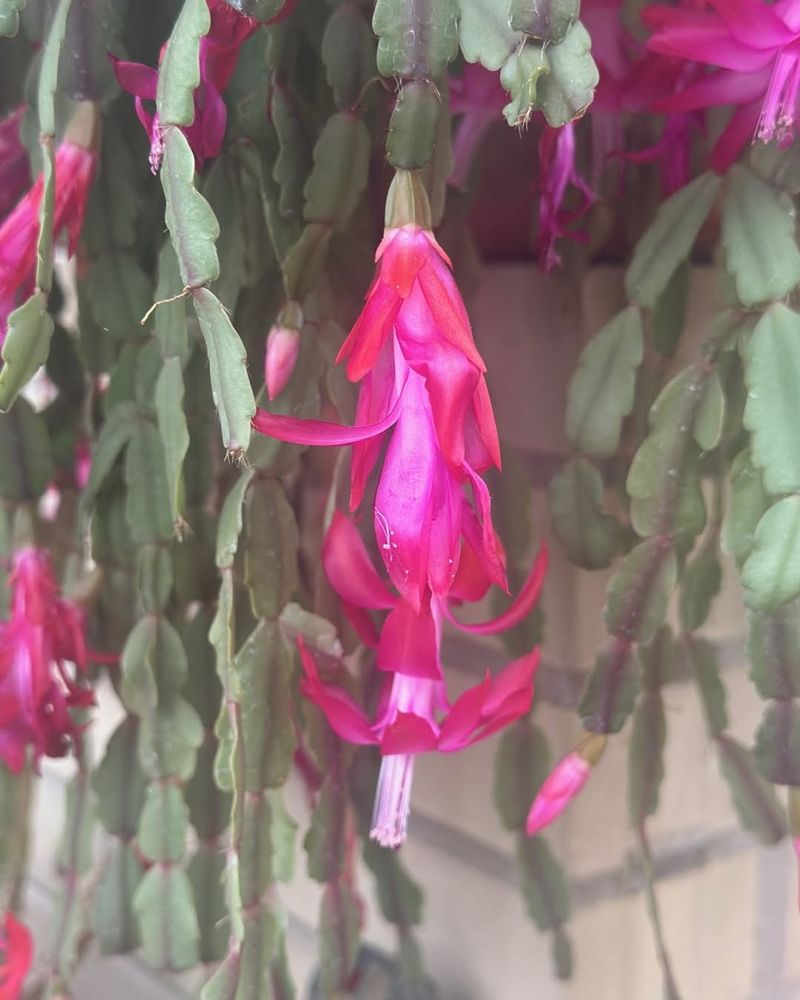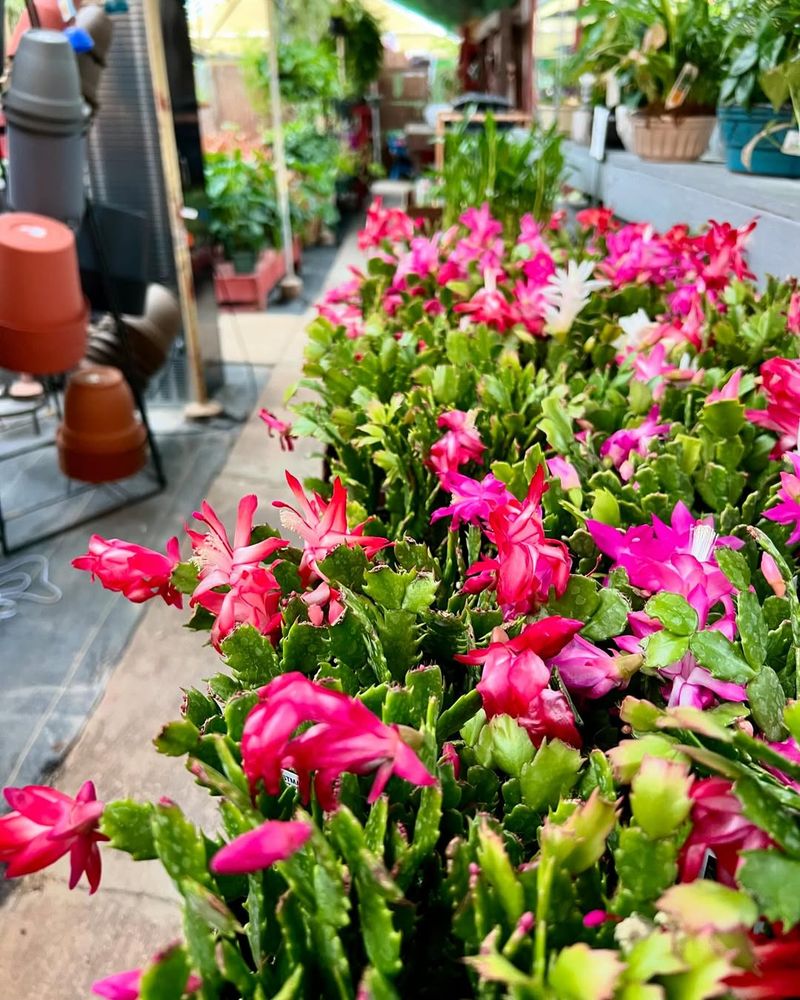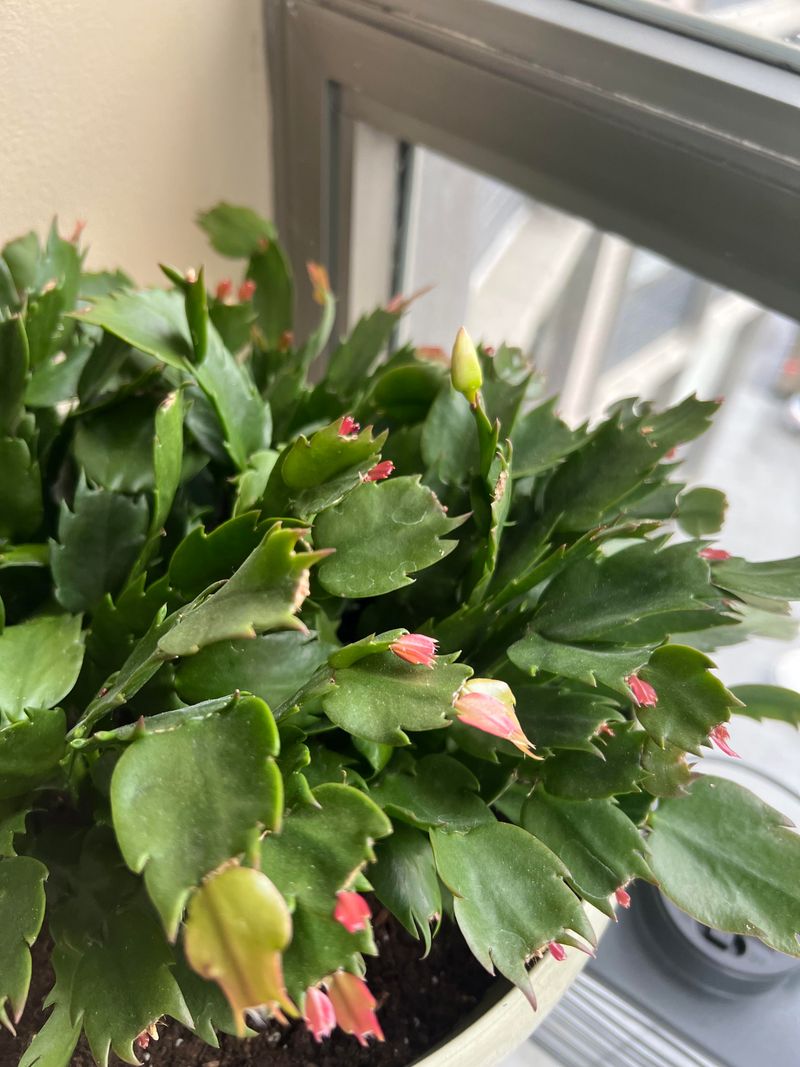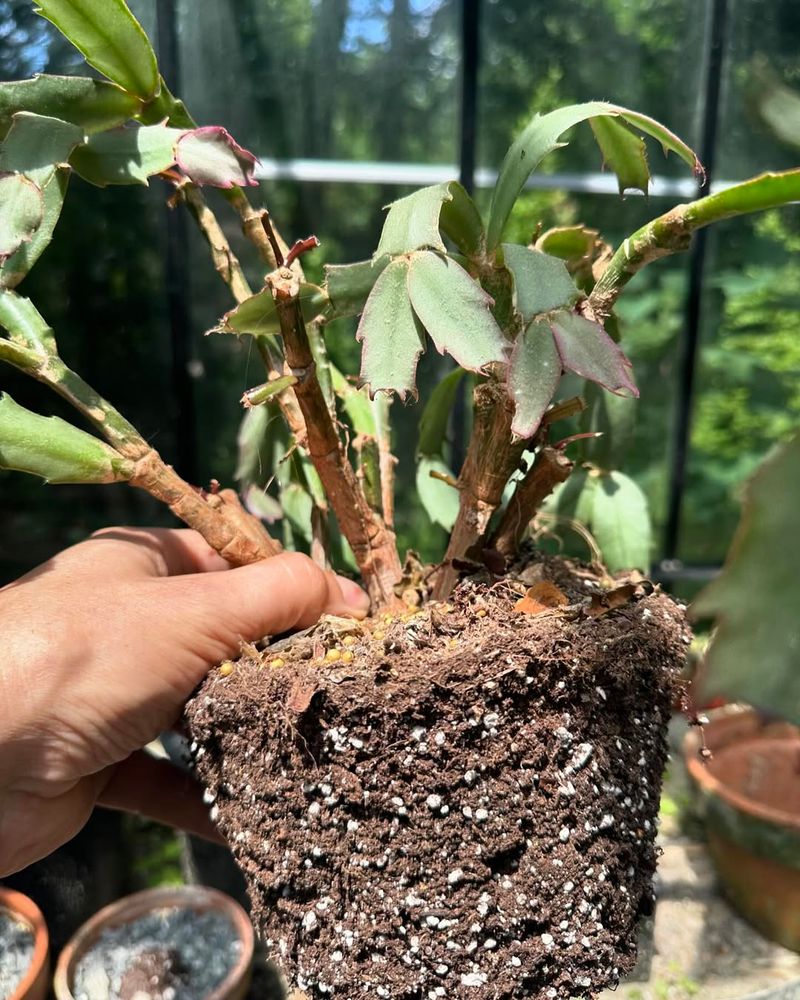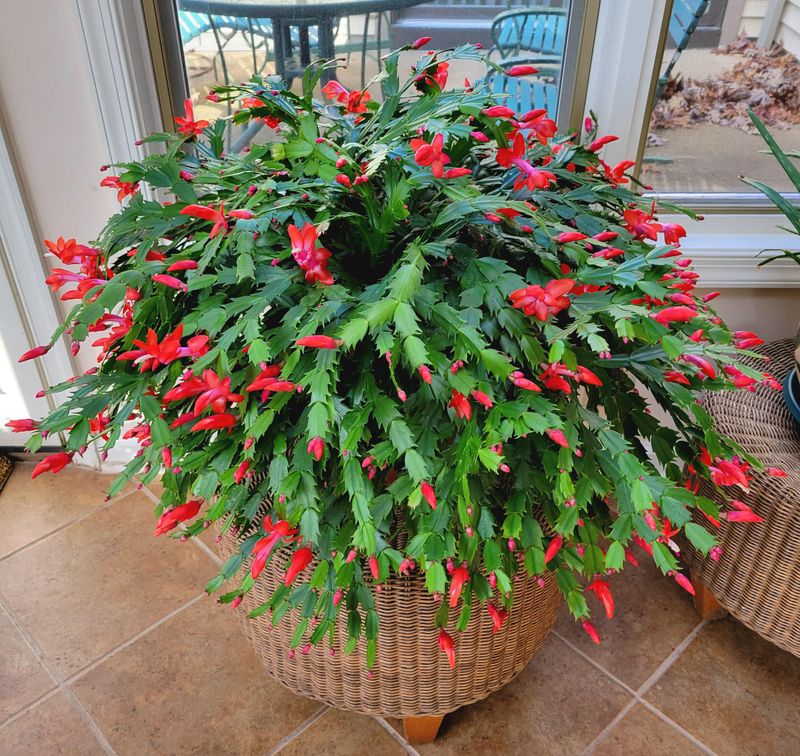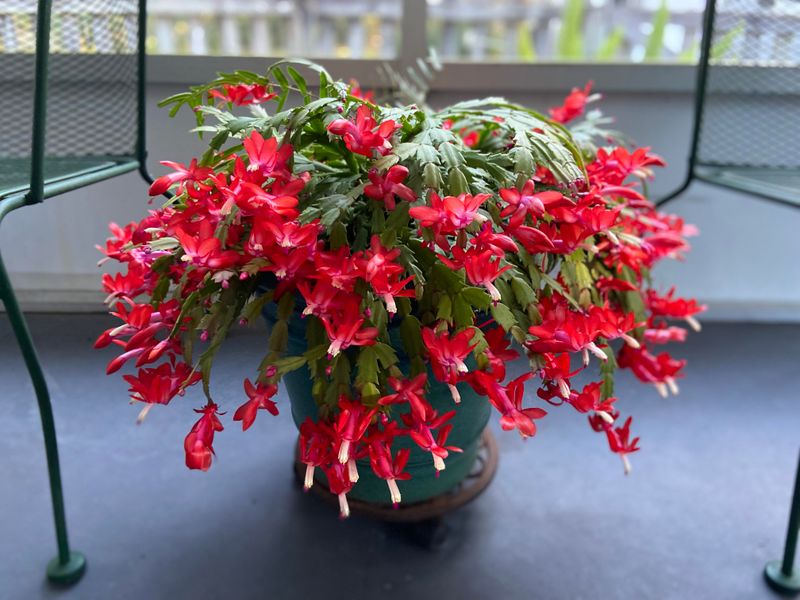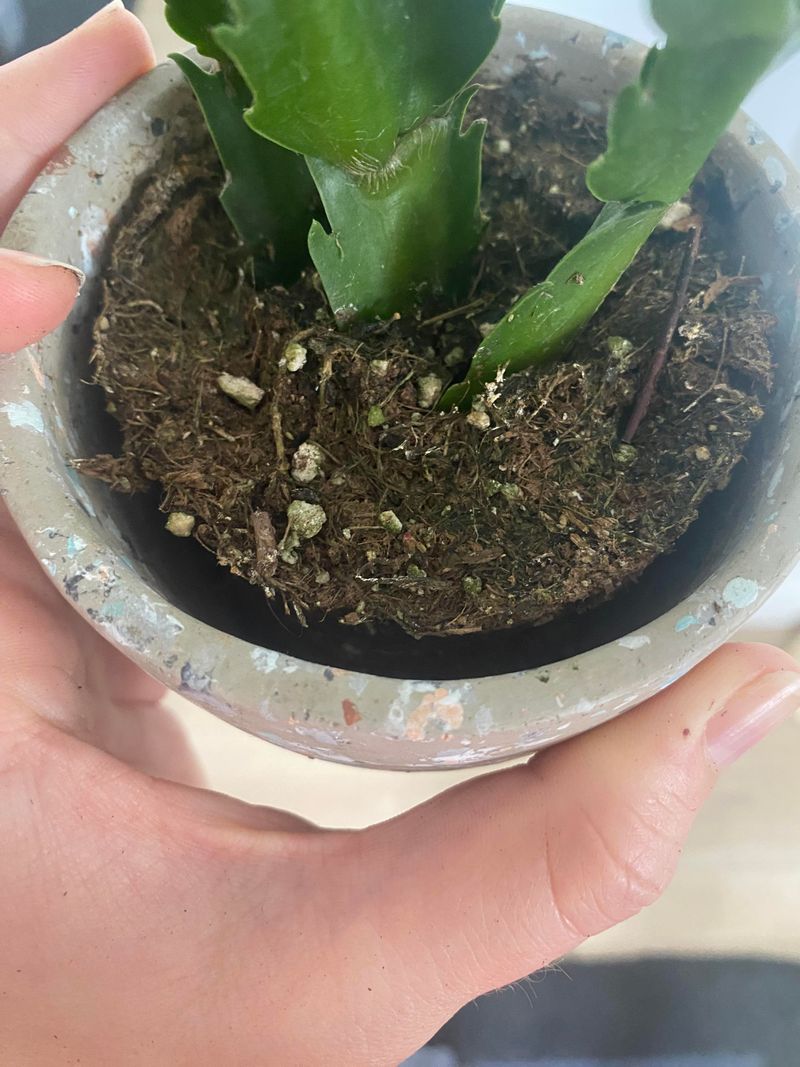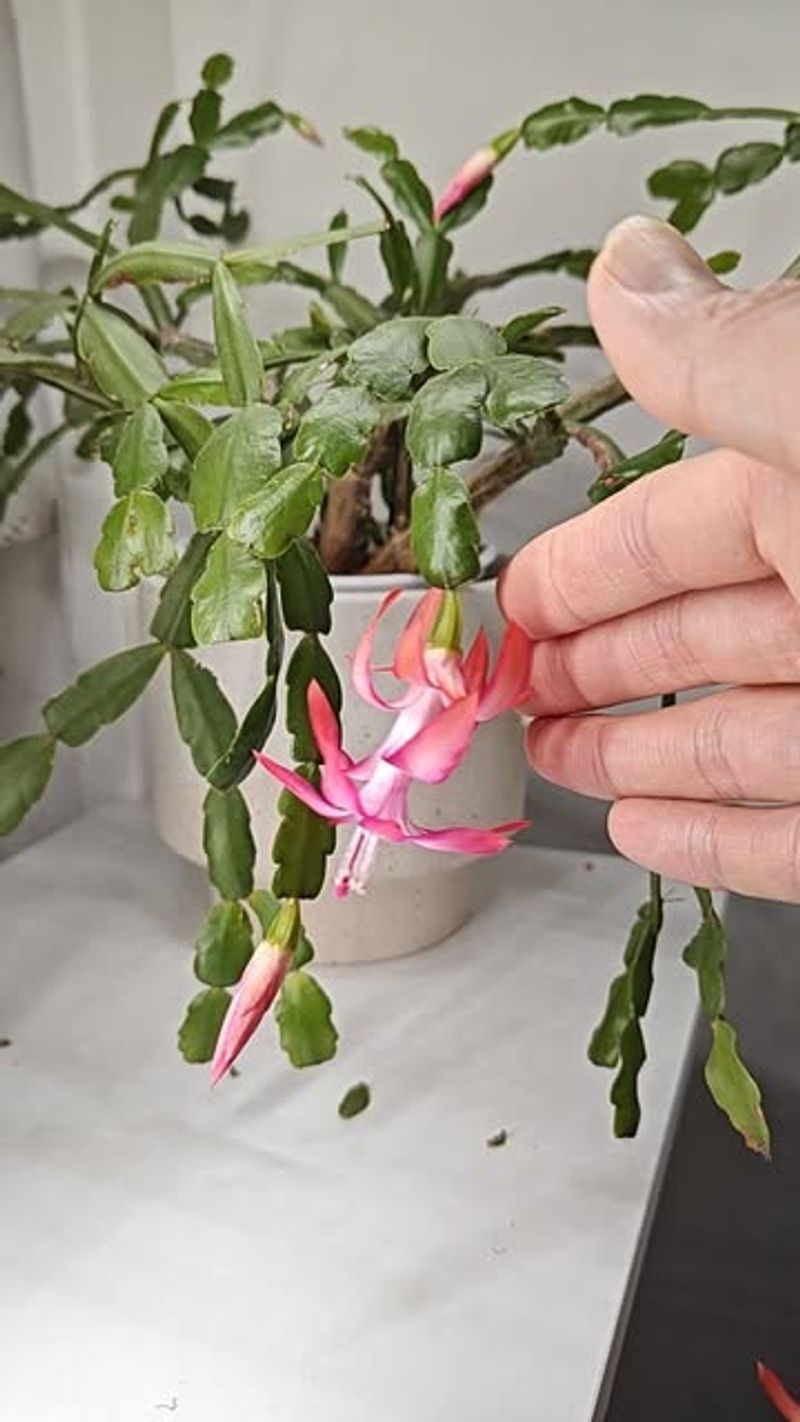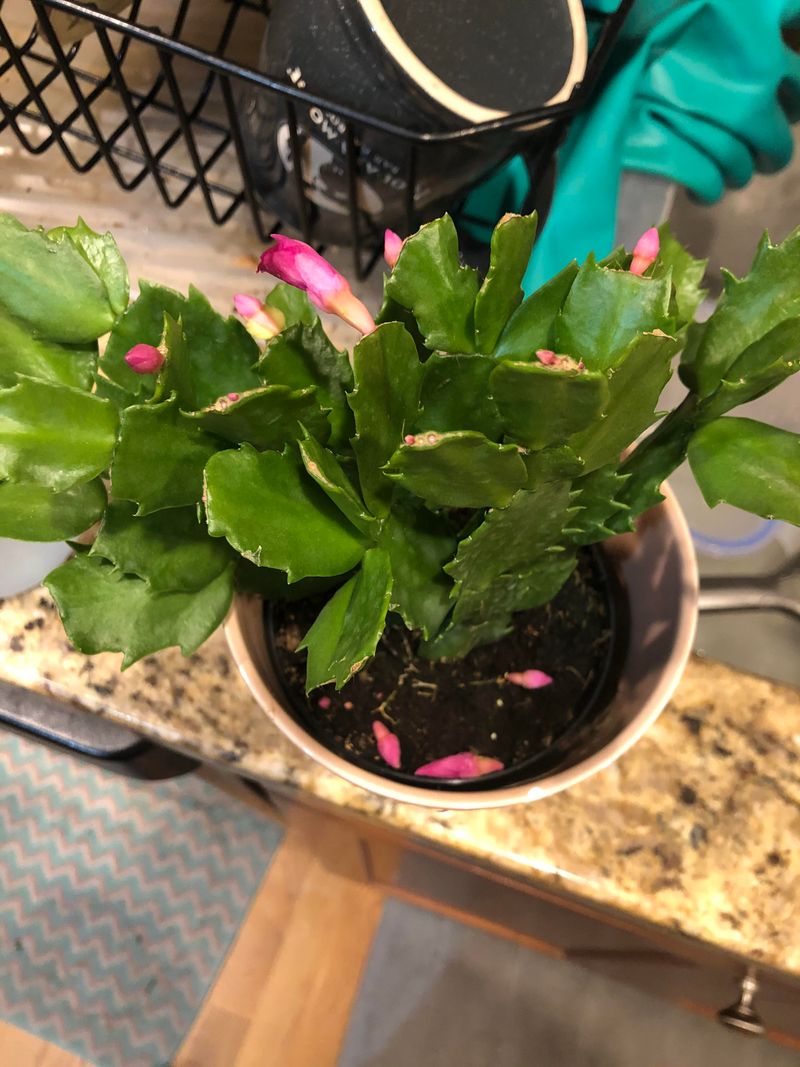Christmas cactus can be tricky in California, especially if grown indoors. Overwatering, poor lighting, and wrong temperatures can ruin blooms.
Avoiding these missteps helps your plant thrive year after year. Learning the quirks of this festive favorite makes it a joy to care for.
1. Overwatering Your Plant
California gardeners often give their Christmas cactus too much water, thinking it needs constant moisture. Actually, these plants prefer their soil to dry out slightly between waterings.
Too much water causes root rot, which makes the leaves turn yellow and mushy. During California’s dry summer months, check the top inch of soil before watering.
If it feels damp, wait a few more days. Your cactus will thank you with healthy growth and beautiful blooms.
2. Placing It in Direct Sunlight
Many Californians assume all cacti love bright, direct sunshine and place their Christmas cactus on sunny windowsills. This is a big mistake because these plants are actually forest cacti that naturally grow under tree canopies.
Direct California sun, especially during hot afternoons, burns the leaves and turns them red or pale. Instead, find a spot with bright, indirect light.
East-facing windows work perfectly for California homes.
3. Ignoring Temperature Changes
California’s weather can swing between warm days and cool nights, especially in fall. Your Christmas cactus needs these temperature drops to trigger blooming.
Keeping your plant in a constantly warm room prevents flower buds from forming. During autumn months in California, let your cactus experience nighttime temperatures around 50-55 degrees.
Avoid placing it near heaters or air conditioning vents. Natural temperature fluctuations help signal blooming time for your plant.
4. Using the Wrong Soil
Planting your Christmas cactus in regular potting soil is a common error among California gardeners. These plants need well-draining soil that mimics their natural forest environment.
Heavy soil holds too much moisture and suffocates the roots. Mix regular potting soil with perlite, sand, or orchid bark to improve drainage.
California garden centers sell special cactus mixes that work wonderfully. Good drainage keeps roots healthy and prevents fungal problems in our humid coastal areas.
5. Forgetting About Humidity
California’s inland areas get extremely dry, especially during Santa Ana wind events. Christmas cacti come from humid Brazilian forests and struggle in bone-dry air.
Low humidity causes buds to drop before opening and leaves to shrivel. Mist your plant regularly or place it on a pebble tray filled with water.
Grouping plants together also creates a mini humid environment. Bathrooms and kitchens in California homes often provide perfect natural humidity levels.
6. Skipping the Darkness Period
Did you know Christmas cacti need darkness to bloom? California’s bright streetlights and indoor lighting can confuse your plant’s natural cycle.
Your cactus requires 12-14 hours of complete darkness each night for about six weeks before blooming season. Even a little light from passing cars or hallway lamps disrupts this process.
Cover your plant or move it to a dark room each evening during fall months in California for spectacular holiday flowers.
7. Repotting Too Often
California plant enthusiasts sometimes repot their Christmas cactus every year, thinking bigger pots mean bigger plants. Actually, these cacti prefer being slightly rootbound and bloom better in snug containers.
Frequent repotting stresses the plant and delays flowering. Only repot every two to three years, or when roots grow through drainage holes.
Choose a pot just one size larger. Spring is the best time for repotting in California’s mild climate.
8. Over-Fertilizing the Plant
Eager California gardeners sometimes feed their Christmas cactus too much fertilizer, hoping for more blooms. Extra nutrients actually harm the plant and cause salt buildup in the soil.
These cacti are light feeders that need minimal fertilization. Use a diluted liquid fertilizer once monthly during spring and summer only.
Stop feeding completely in fall when buds form. Coastal California’s naturally rich soil often provides enough nutrients without additional feeding.
9. Moving It During Budding
Once your Christmas cactus forms flower buds, resist the urge to relocate it around your California home. Moving the plant causes bud drop, a frustrating problem that ruins your holiday display.
Changes in light, temperature, and humidity stress the plant during its critical blooming phase. Choose a perfect spot before buds appear and leave it there.
Patience pays off with a stunning show of flowers that lasts for weeks throughout the California winter season.

